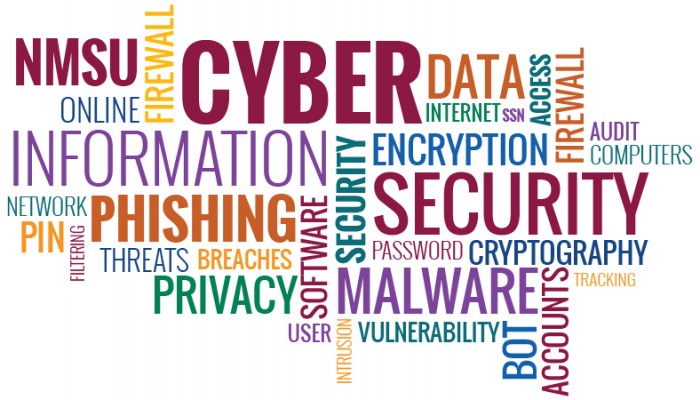Employee awareness is the cornerstone of a good cyber protection program. However, the expressions associated with cybersecurity can seem foreign to many people at first. Here is a list of common terms and their associated definitions to help you expand your cyber vocabulary:
- Adware is software that automatically displays or downloads advertising material (often unwanted) when a user is online.
- Antivirus Software programs are designed to protect computers, systems and networks from a digital virus. This software may be periodically updated to continually monitor a computer and block viral infections.
- Back Doors are intentional system design elements that offer a way for network designers to circumvent system security.
- Blended Threats are cyber threats that simultaneously include multiple damaging components, such as worms and viruses.
- Bots are often installed by cyber criminals to bypass your cyber protection elements, such as antivirus software and firewalls. Once in place, a bot can be manipulated as desired. Hackers can use bots to infect a system with malicious logic that permits control of the computer whenever the user is on the Internet.
- A Botnet is a group of Internet computers that have been corrupted to send malicious transmissions to other computers without the senders’ knowledge. You may hear botnets referred to as zombie armies.
- Cyber Attacks are intentional, malicious attempts to alter system or network data or functionality, or access electronic information for inappropriate purposes.
- Cyber Hacks are successful breaches in system security that occur due to a cyber attack.
- Cyber Security Awareness is a combination of protective knowledge, actions and attitudes that keep computerized information systems safe.
- A Cyber Threat is the possibility of a cyber attack. Cyber threats are sometimes called cyber security risks.
- Cybersecurity is the process, ability or activity used to protect computer systems and information from damage or improper use.
- Encryption is the translation of plaintext or unencrypted data into encrypted text called ciphertext.
- Firewalls are software or hardware components that limit system or network traffic based on rules that govern acceptable access.
- A Gateway is a bridge or connection between two networks.
- Hackers are unauthorized individuals who attempt to disrupt or damage a computer, system or network.
- The Internet is a worldwide network that permits computer users to communicate with one another.
- The Intranet is a network populated only by authorized people within a certain organization. A firewall is often used to protect the network’s websites from unauthorized viewings and interactions.
- A Keylogger is software that records the things that you type and then shares the information with the person who installed it.
- Malicious Code is software added to a computer to perform an unauthorized action.
- Malware is malicious software that disables, harms or destroys a computer system using destructive programs, such as Trojan horses and viruses.
- Phishing is the use of web-based scamming programs, which may entice potential victims through emails that lead them to fictitious websites that often look like legitimate banking sites. Cyber criminals use phishing to obtain personal information for fraudulent purposes, such as identity theft.
- Ransomware is a type of malware that restricts access to the infected computer system in some way, and demands that the user pay a ransom to the malware operators to remove the restriction.
- Scareware is a form of malicious software that uses social engineering to cause shock, anxiety, or the perception of a threat in order to manipulate users into buying unwanted software.
- Spyware is software that is secretly installed on network computers to gather information, such as passwords and credit card numbers, and share it with a third party.
- Trojan Horses are destructive computer programs that may be installed as you download a file or program, or open an email attachment from an unknown source.
- A Virus is destructive software that is used to harm or impair computer functionality.
- Worms are programs that reproduce, spreading from one computer to another within a network and clogging systems as they replicate.
- A zombie refers to a computer that is compromised, usually by the introduction of a botnet that gives control of the computer to a hacker.

